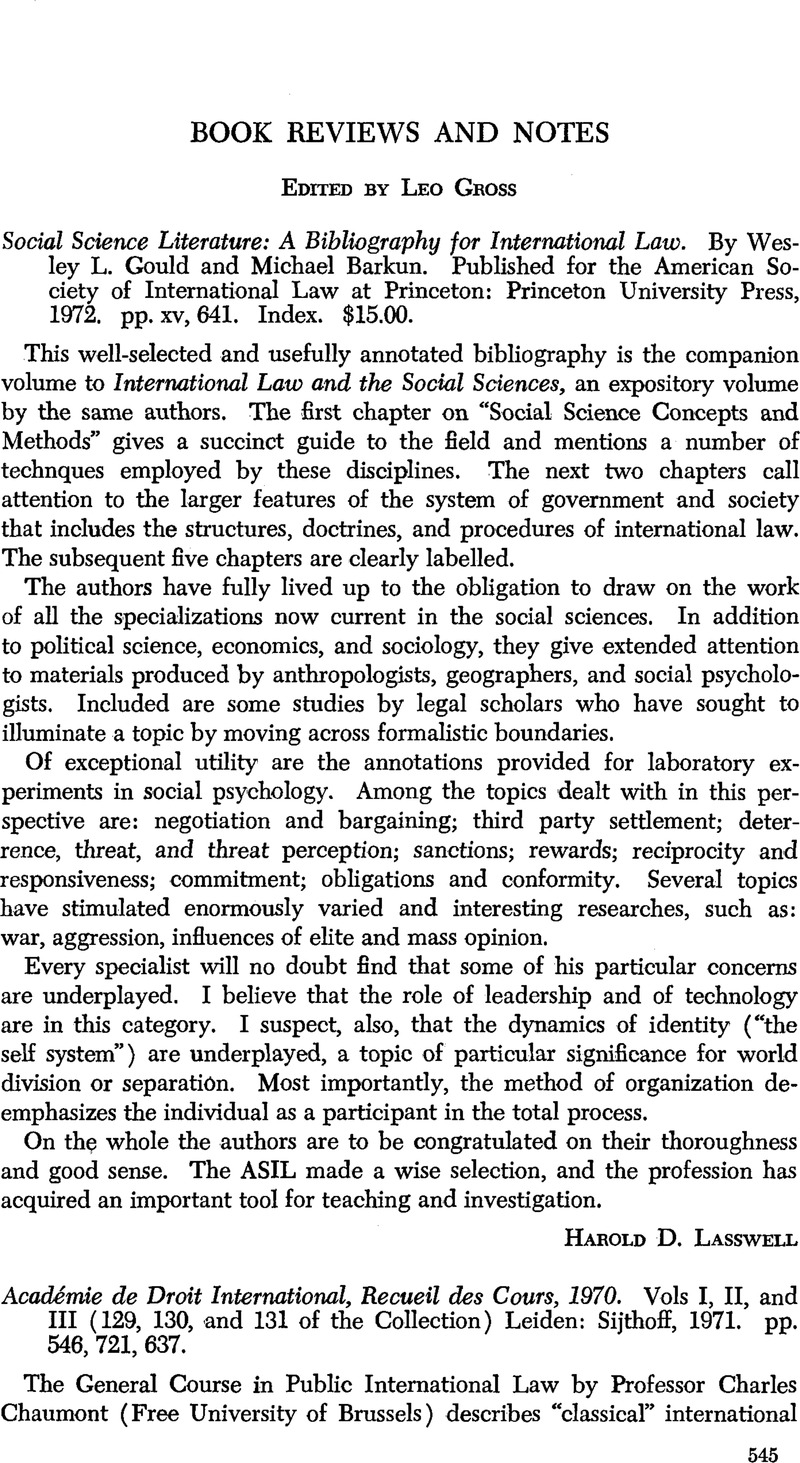No CrossRef data available.
Published online by Cambridge University Press: 28 March 2017

1 Baxter, , Multilateral Treaties as Evidence of Customary International Law, Brit. Y.B. Int. Law, 275 (1965–66)Google Scholar.
2 D’Amato, , Treaties as a Source of General Rules of International Law, Harvard Int. L. Quob Bull. (No. 2), at 1 (1962)Google Scholar; The Concept of Special Custom in International Law, 63 AJIL 211 (1969); and Manifest Intent and the Generation by Treaty of Customary Rules of International Law, 64 AJIL 892 (1970). Professor D’Amato’s book tying all these together, The Concept of Custom in International Law (Cornell, 1971), had not been published when Professor Baxter delivered his course at The Hague.
3 PCIJ ser. A/B no. 53.
4 “On petit done soutenir que la validité du droit conventionnel successoral se mésure au degré de respect qu’il porte au droit des peuples à disposer d’eux-memes.” (130, p. 487).
5 “. . . toute stipulation ou norme successorale qui serait contraire au droit des peuples à disposer d’eux-mêmes, devrait être réputée nulle.” (130, p. 493).
6 “. . . destinées par leurs actes institutifs, par leur vocation, par le processus institutionnel qui, depuis leur creation, accompagne leur activity, a influencer directement la sphère constitutionnelle des Etats membres.” (131, p. 320).